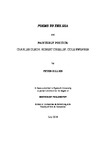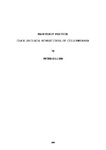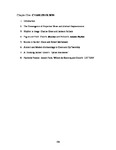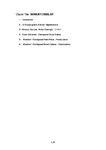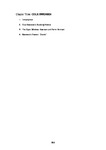Poems to the Sea and Painterly Poetics: Charles Olson, Robert Creeley, Cole Swensen
| dc.contributor.supervisor | Caleshu, Anthony | |
| dc.contributor.author | Gillies, Peter | |
| dc.contributor.other | Faculty of Arts, Humanities and Business | en_US |
| dc.date.accessioned | 2016-08-08T15:02:15Z | |
| dc.date.available | 2016-08-08T15:02:15Z | |
| dc.date.issued | 2016 | |
| dc.identifier | 10274327 | en_US |
| dc.identifier.uri | http://hdl.handle.net/10026.1/5225 | |
| dc.description.abstract |
Poems to the Sea: Rather than narrating or describing a work of visual art, the poems that form this collection show an accumulation, juxtaposition and realignment of material ranging from art historical detail and critique to a more personal, location specific response to works viewed in galleries and museums. Many of the poems engage with non-representational artworks and question how best to reflect, translate or expand upon their transformative effects. The first section, ‘Museum Notes’, explores Charles Olson’s open field poetics by giving artists and writers a conversational voice. ‘Sound Fields’, the second section, responds to individual works of art and reflects a systems-based approach. The authorial voice within ‘Poems to the Sea’, the third section, is that of an artist involved in making a series of palimpsest drawings to capture a sense of place as drawing and writing overlaps and intertwines. Painterly Poetics: Charles Olson, Robert Creeley, Cole Swensen: This thesis explores three American poets from successive generations to examine three related types of engagement with visual art. As literary models that have informed my own poetic practice, Charles Olson, Robert Creeley and Cole Swensen have theorized their own writing process to consider ways of using language to enhance the transmission and transcription of their visual stimuli and ideas. All three are interested in visual art as a model for the writing process: as a means of seeing, thinking and perceiving. After an introduction that surveys relations between verbal and visual art, a chapter is devoted to each of the three poets. In the opening and longest chapter, examples of Olson’s writing are compared to the approach of several Abstract Expressionist painters who contributed to the culture of experimentation and spontaneity that emerged under Olson’s leadership at Black Mountain College in the early 1950s. Following a discussion of Olson as a uniquely influential figure, the chapter on Creeley considers the role of visual art in his poetics. Swensen’s writing is subsequently explored for its extension of the Black Mountain legacy: how she builds upon established critical methods to achieve what she calls ‘a side-by-side, walking-along-with’ relationship between the poem and the artwork. | en_US |
| dc.language.iso | en | en_US |
| dc.publisher | Plymouth University | en_US |
| dc.subject | Painterly poetics | en_US |
| dc.subject | Composition by field | |
| dc.subject | Projective verse | |
| dc.subject | Open field poetics | |
| dc.subject | Black Mountain College | |
| dc.subject | Abstract Expressionism, | |
| dc.subject | American Poetry | |
| dc.subject | Ekphrasis | |
| dc.title | Poems to the Sea and Painterly Poetics: Charles Olson, Robert Creeley, Cole Swensen | en_US |
| dc.type | Thesis | |
| plymouth.version | Full version | en_US |
| dc.identifier.doi | http://dx.doi.org/10.24382/4801 |
Files in this item
This item appears in the following Collection(s)
-
01 Research Theses Main Collection
Research Theses Main


